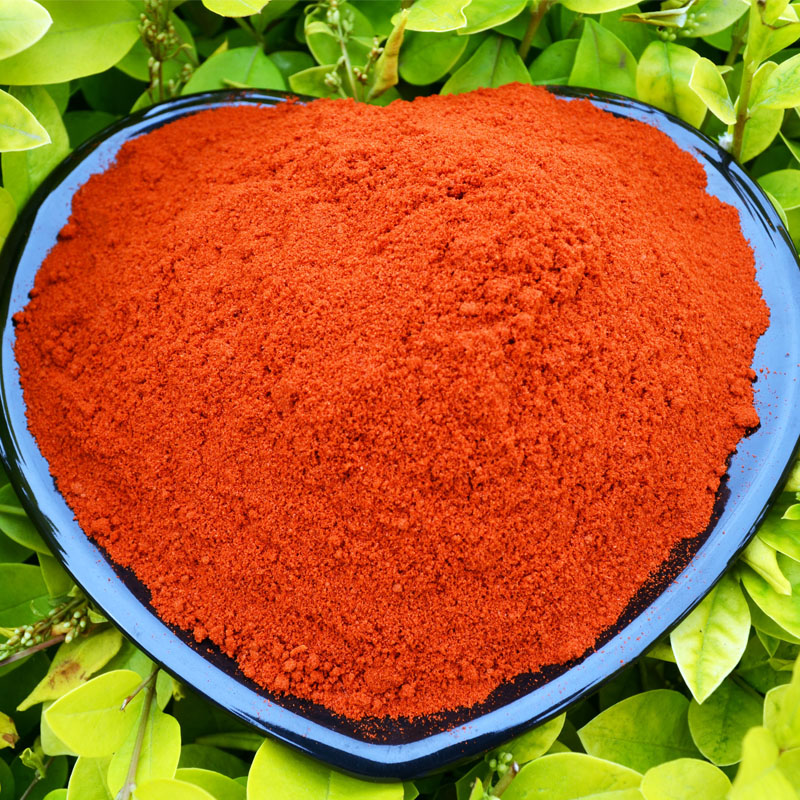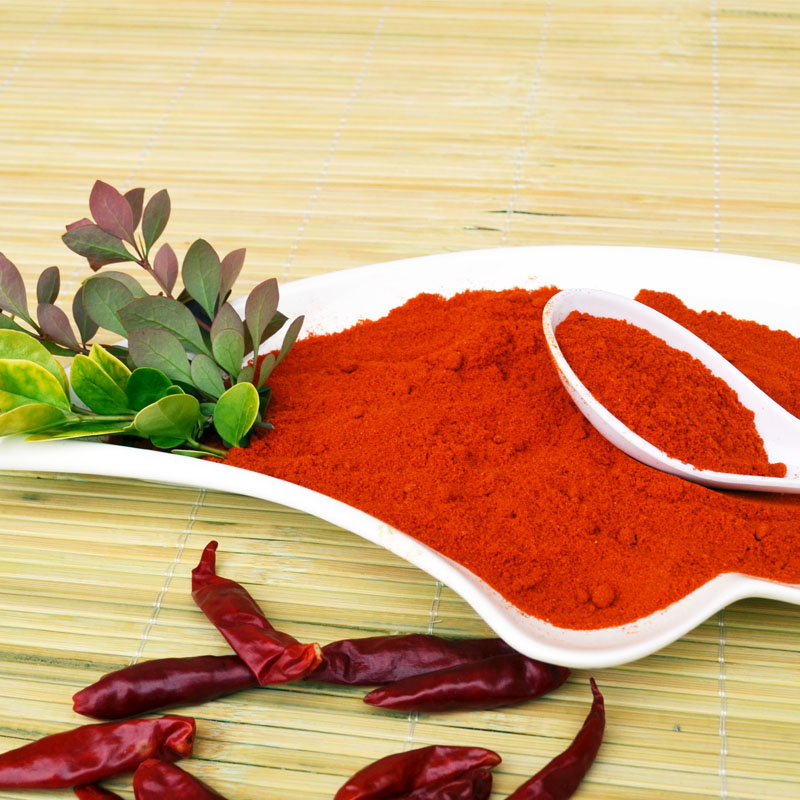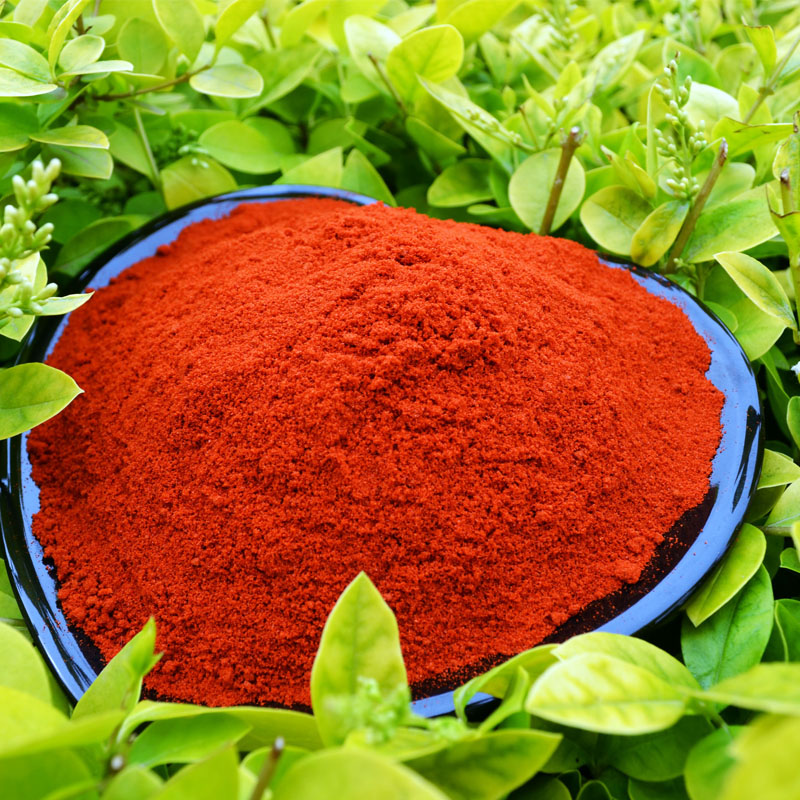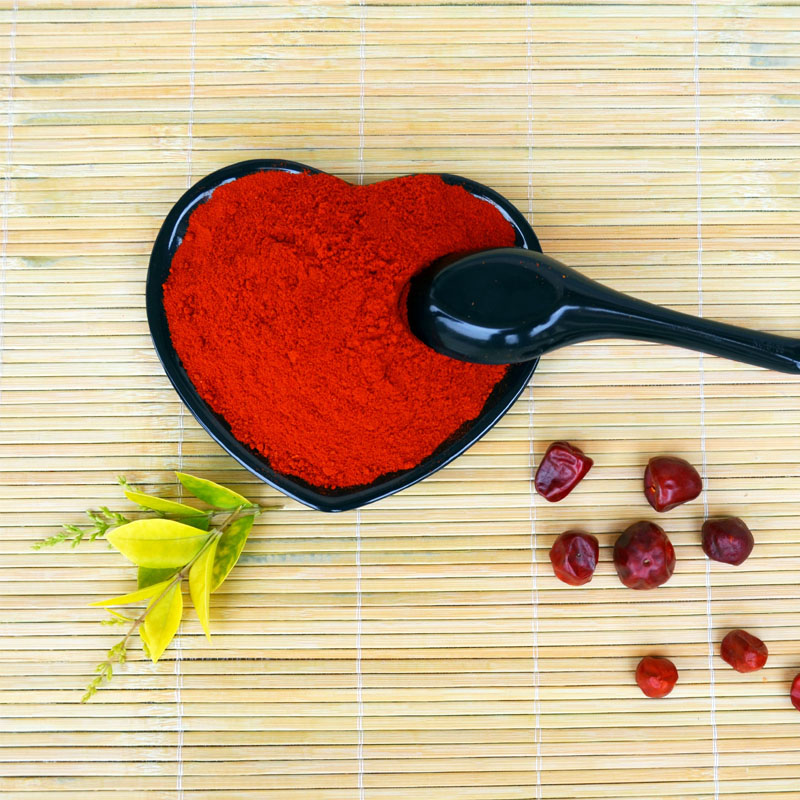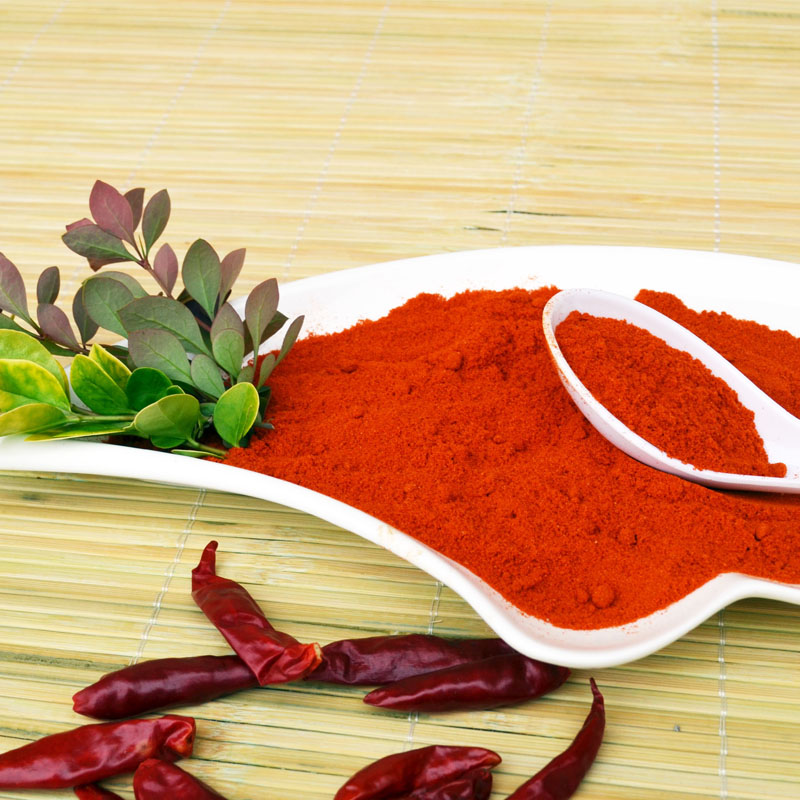
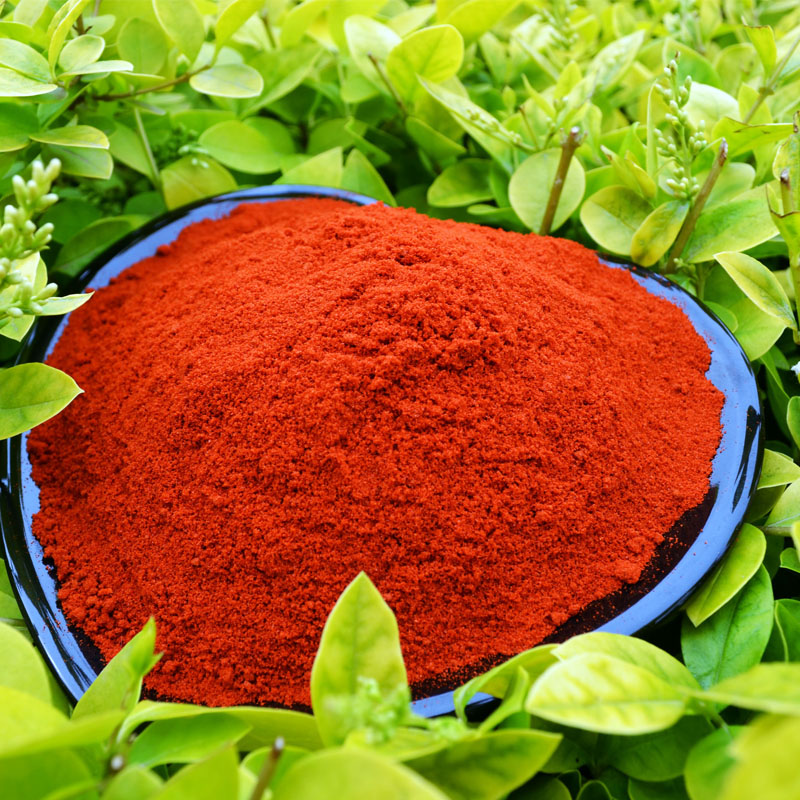
Awọn ọja ata ọfẹ ati awọn ipakokoropaeku wa pẹlu aropọ ZERO ti wa ni tita gbona si awọn orilẹ-ede ati agbegbe ti o nifẹ lati lo nigba sise. BRC, ISO, HACCP, HALAL ati awọn iwe-ẹri KOSHER wa.
Ni gbogbogbo awọn ọja fọọmu lulú wa ti wa ni abadi ni apo iwe 25kg pẹlu apo edidi PE ti inu. Ati soobu package jẹ tun itewogba.
Red chili peppers, which are a part of the Solanaceae (nightshade) family, were first found in Central and South America and have been harvested for use since about 7,500 BC. Spanish explorers were introduced to the pepper while on a search for black pepper. Once brought back to Europe, the red peppers were traded in Asian countries and were enjoyed primarily by Indian cooks.
The village of Bukovo, North Macedonia, is often credited with the creation of crushed red pepper.[5] The name of the village—or a derivative of it—is now used as a name for crushed red pepper in general in many Southeast European languages: "буковска пипер/буковец" (bukovska piper/bukovec, Macedonian), "bukovka" (Serbo-Croatian and Slovene) and "μπούκοβο" (boukovo, búkovo, Greek).
